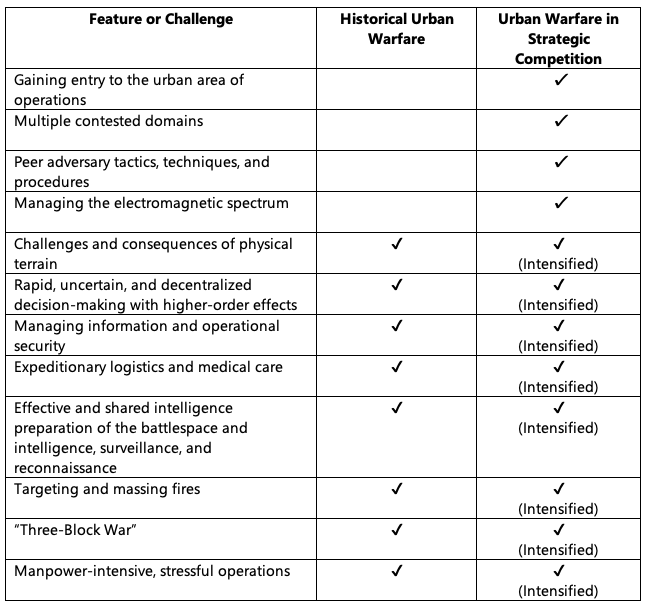
Four attributes distinguish today’s city battles from those that have come before.
How does urban warfare in Ukraine, where the adversaries are relatively balanced nation-states, differ from recent Fallujah- or Mosul-type battles between states and non-state armed groups?
It is useful to start with a list of urban warfare’s unique features and challenges, such as the one I produced in a 2019 study on urban warfare in strategic competition. In this study, a review of joint/allied doctrine, subject-matter expert discussions, historical case studies, and hypothetical vignettes suggested that most of the features and challenges present in historical battles are likely to be intensified in great power competition (today’s “strategic competition”). Strategic competition is also likely to bring four new features and challenges.

Indeed, in Ukraine we have seen all eight features and challenges of historical urban warfare identified in the 2019 study. For instance, both Ukrainian and Russian forces have been constrained by the physical terrain of cities, long a feature of urban combat. High-rise structures have shaped what weaponry and equipment can be used, demanded decentralized command and control, and generated casualties. The other seven features and challenges of historical urban warfare are also present, including the need for rapid and decentralized decision-making under uncertainty; challenges of information management; effective ISR, targeting; and expeditionary logistics and medical care; and elements of the “Three-Block War” and manpower-intensive and stressful operations.
